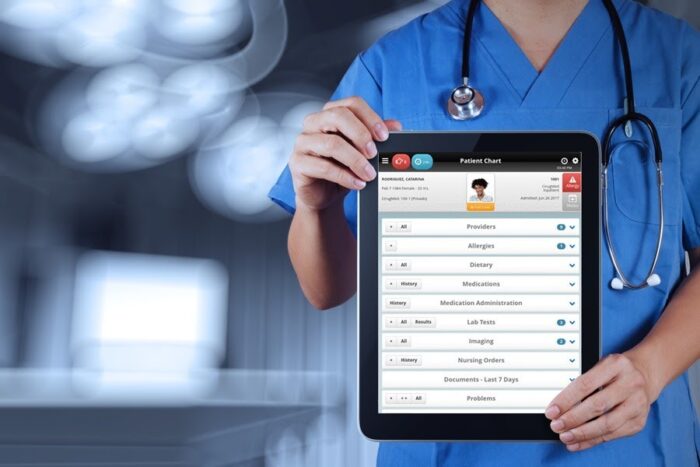
The healthcare industry is rapidly changing, and healthcare providers need to keep up with the changing landscape. One of the most important aspects of providing quality healthcare is effective communication and care management. In this article, we will explore several strategies and technologies that healthcare providers can implement to streamline patient communication and care, reduce redundancy, create a comfortable atmosphere, offer convenient payment options, and enhance overall efficiency.
Implementing Conversational AI and Healthcare Chatbots
Conversational AI and healthcare chatbots can revolutionize patient communication and care by providing instant, accurate information to patients. By integrating conversational AI or healthcare chatbots into their website, social media platforms, or phone system, healthcare providers can reduce waiting times, minimize phone call volumes, and provide 24/7 support for patients. This technology can address common patient inquiries, such as appointment scheduling, prescription refills, and general health questions.
Healthcare providers should consider implementing conversational AI and healthcare chatbots to:
- Improve patient satisfaction by providing instant responses to their inquiries.
- Free up staff time, allowing them to focus on other critical tasks.
- Provide patients with 24/7 support, improving accessibility to healthcare services.
Adopting a Digital Front Door

A digital front door is a comprehensive, user-friendly online platform that provides patients with a single point of entry to access healthcare services. It can streamline patient communication and care by centralizing information and offering various tools for patients and providers alike. A digital front door can simplify appointment scheduling, allow patients to access and update their medical records and health information, enable secure communication between patients and providers, and offer online bill payment options.
Healthcare providers should adopt a digital front door to:
- Provide patients with a user-friendly platform to access healthcare services.
- Reduce administrative burdens by automating appointment scheduling and bill payment.
- Improve patient satisfaction by providing convenient, easy-to-use online services.
Utilizing HIPAA Secure Texting Between Team Members
HIPAA secure texting is a critical component of efficient communication in a healthcare setting. By adopting a HIPAA-compliant messaging platform, healthcare providers can improve communication and collaboration, minimize the risk of privacy breaches and HIPAA violations, streamline workflows, and enhance patient safety by providing immediate access to critical information.
Healthcare providers should utilize HIPAA secure texting to:
- Improve communication and collaboration between staff members.
- Reduce the risk of privacy breaches and HIPAA violations.
- Enhance patient safety by providing staff members with immediate access to critical information.
Offering Virtual Visits

Virtual visits are an essential tool for streamlining patient care in the digital age. By offering virtual visits, healthcare providers can increase accessibility to care, reduce waiting times and overcrowding in the clinic, provide more flexible scheduling options, allow for quicker follow-ups, and decrease the risk of spreading infectious diseases by limiting in-person contact.
Healthcare providers should offer virtual visits to:
- Provide patients with more flexible scheduling options.
- Improve patient accessibility to healthcare services.
- Reduce waiting times and overcrowding in the clinic.
- Limit in-person contact and the spread of infectious diseases.
Implementing Patient Texting
Patient texting is a convenient, efficient, and secure way to communicate with patients regarding appointments, prescription refills, and general health information. By incorporating patient texting into their communication strategy, healthcare providers can improve patient engagement and satisfaction, reduce no-shows and cancellations with automated appointment reminders, provide patients with important health updates and preventive care reminders, and improve medication adherence with prescription refill reminders.
Healthcare providers should implement patient texting to:
- Improve patient engagement and satisfaction.
- Reduce no-shows and cancellations with automated appointment reminders.
- Provide patients with important health updates and preventive care reminders.
- Improve medication adherence with prescription refill reminders.
Adopting a Patient Management System

A patient management system is an essential tool for streamlining patient communication and care. It can help healthcare providers manage patient information, schedule appointments, and automate various administrative tasks. By implementing a patient management system, healthcare providers can reduce paperwork and administrative burdens, improve patient satisfaction by streamlining the appointment scheduling process and reducing wait times, provide better patient care with quick access to comprehensive patient information and history, and enable staff to collaborate more effectively by sharing patient information securely.
Healthcare providers should adopt a patient management system to:
- Reduce paperwork and administrative burdens.
- Improve patient satisfaction by streamlining the appointment scheduling process and reducing wait times.
- Provide better patient care with quick access to comprehensive patient information and history.
- Enable staff to collaborate more effectively by sharing patient information securely.
Reducing Redundancy
Redundancy can be a significant problem in healthcare. By reducing redundant tasks, healthcare providers can streamline their processes, improve efficiency, and reduce employee burnout. Some ways to reduce redundancy include automating administrative tasks, implementing a digital front door, and utilizing patient management systems.
Healthcare providers should focus on reducing redundancy to:
- Streamline their processes and improve efficiency.
- Reduce employee burnout by eliminating redundant tasks.
- Improve patient satisfaction by improving the overall healthcare experience.
Creating a Comfortable Atmosphere

Creating a comfortable atmosphere in a healthcare setting can help patients feel more at ease and reduce anxiety. Simple things such as providing comfortable seating, playing calming music, and offering refreshments can go a long way in creating a more relaxing environment.
Healthcare providers should focus on creating a comfortable atmosphere to:
- Improve the overall patient experience.
- Reduce patient anxiety and stress.
- Increase patient satisfaction and loyalty.
Offering Payment Options
Offering convenient payment options can improve patient satisfaction and reduce administrative burdens. Healthcare providers can offer various payment options, such as online bill payment, mobile payments, and automatic payments. By offering these options, patients can pay their bills more easily, and healthcare providers can reduce the time and resources spent on billing and collections.
Healthcare providers should offer payment options to:
- Improve patient satisfaction by providing convenient payment options.
- Reduce administrative burdens by automating the payment process.
- Increase the efficiency of billing and collections.
Healthcare providers must continuously adapt and streamline their processes to meet the changing needs of the healthcare industry. By implementing strategies and technologies such as conversational AI or healthcare chatbots, digital front doors, HIPAA secure texting between team members, virtual visits, patient texting, patient management systems, reducing redundancy, creating a comfortable atmosphere, and offering convenient payment options, healthcare providers can improve patient communication and care, reduce employee burnout, and enhance overall efficiency.
These tools and strategies are essential for healthcare providers who wish to provide patient-centered care while staying competitive in the rapidly evolving healthcare industry. By leveraging these technologies and strategies, healthcare providers can offer better care and service to their patients, and achieve greater success in their practice. By focusing on patient communication and care, healthcare providers can improve patient outcomes and increase patient satisfaction, which is essential in today’s healthcare landscape.
















